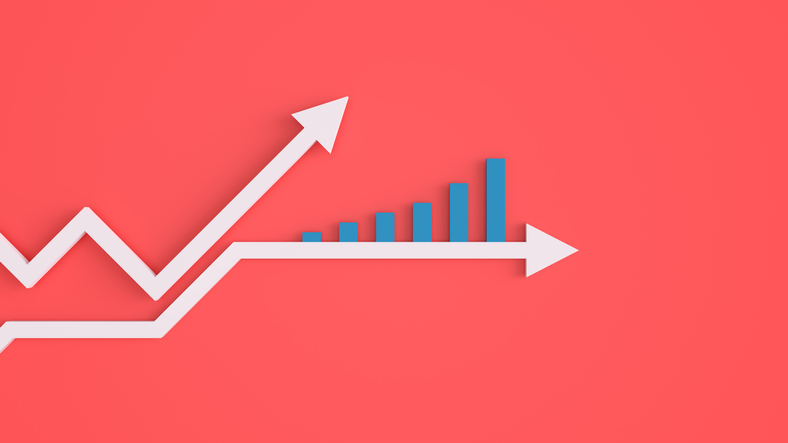Active ETFs (Exchange Traded Funds) offer investors many benefits from diversification to liquidity. Learn how they can help you and what you may want to consider before jumping in.
What are Active ETFs?
Active Exchange Traded Funds (ETFs) are quoted on an exchange and are an easy way for investors to access the investment expertise of fund managers.
Active ETFs are managed by a portfolio manager, who 'actively' manages the basket of underlying stocks with the aim of outperforming the market.
Benefits of investing in a Fidelity Active ETF
Experts you can trust
We’ve been experts in active investing for over 50 years
Makes investing easy
We make decisions on the stocks selected and manage the portfolio for you
Invest like a local
Access our global investment expertise, leveraging insights and analysis from 400+ investment professionals on the ground, around the world
Easy on your back pocket
The minimum investment amount is lower for an Active ETF than for managed funds
Simple to transact
Buy and sell as you would a normal share with your broker or adviser or using an online broking account
Easy to monitor
Your Fidelity Active ETF sits in your trading account alongside your other investments making it easy to monitor
Managed by investment experts
Active ETFs provide access to a portfolio manager’s investment expertise via one simple trade on the stock exchange.
Active ETFs are open-ended actively-managed funds quoted on an exchange. The ETF is managed by a portfolio manager, who ‘actively’ manages the basket of underlying stocks with the aim of outperforming the market. An active portfolio manager seeks to reduce the downside risks during volatile periods in the market.
The power of active management
Over the long term, many of Fidelity's actively managed funds outperform their benchmarks, after fees by 1-2% pa.
With the power of time and compounding this additional amount can make a big impact to your returns.
Diversified
Diversification is the practice of spreading your investments across different asset classes, markets and sectors so that if one investment is doing poorly, other investments in the portfolio may help to balance out the returns.
More markets
Gain exposure to overseas markets, companies and asset classes that may be difficult to access directly or are less well understood such as global, Asian, emerging markets or demographics.
Themes
Themes such as demographic trends which are a structural, visible, long term mega trend: Rising life expectancy, a growing middle class and population growth are powerful trends which investors with a long-term horizon can leverage through bottom up stock picking.
More companies
Gain exposure to multiple underlying companies in one trade - not just one single stock.
All investments carry risks and diversification is not a guarantee for achieving returns nor a guarantee against potential loss of capital.

Saves you time
We select and monitor the portfolio
The manager selects stocks for the portfolio and can adapt to changing market conditions. An active ETF has a reference benchmark index, but the manager will deviate from it as they see fit, to select the best opportunities for the portfolio
Less paperwork
There is no paperwork for investors with a trading account and you can buy and sell units from your online broking account.

Strategic and tactical uses
Strategic use for long term investment horizons
ETFs can be used for long-term asset allocation among primary asset classes such as equities or fixed income. They can also be used to make strategic tilts to other asset classes, such as emerging markets, demographics or small-caps.
Tactical use of ETFs
ETFs can be an efficient way to adjust portfolios for risk during periods of market volatility.
ETFs are easy to buy and sell as they are quoted and traded on the stock exchange, so your ETF holdings can be quickly increased or reduced to instantly rebalance your investment portfolio.

How do I buy and sell?
An Active ETF is bought and sold via a broker in the same way as buying or selling a share on the stock exchange.
The difference is that this one trade gives you exposure to a diversified portfolio of shares. Investors can view their Active ETF holdings alongside any other direct share holdings they have.
How are Active ETFs priced?
Their unique features make them easy to buy and sell, offering liquidity and transparency:
Units are traded at the market price on the stock exchange (eg ASX)
Because it operates as an open-ended fund it is expected to trade relatively close to the fund's NAV (Net Asset Value).
A market maker provides liquidity by issuing and redeeming units based on market demand.
Can I invest in more than one ETF style?
Some asset classes are more suited to active investing and some to passive - and this also varies according to the risk you are prepared to take. Investors may choose to combine these strategies in their portfolio.
Three popular styles of ETFs
You're investing in an ETF where the fund manager applies an active investment approach to achieve a specific return and risk objective.
The ETF will generally provide exposure to a relevant region/sector based on the investment mandate, but unlike a passive ETF it is not required to hold all the companies in the relevant index.
A management fee is applied to this style of ETF because you are paying for an investment professional to monitor your portfolio.
You're investing in an ETF that uses a passive, rules-based approach.
For example, buy companies that have low historical volatility to try to exploit perceived systemic biases or inefficiencies in the market.
You're investing in an ETF that mirrors the index and which may do this by holding all the companies in the index and at the same percentage weight as the composition of the index, regardless of the prospects for the individual companies.
This means your investment returns will track the ups and downs of the market.
This is the cheapest form of ETF as it only needs to replicate the index, with no expertise added.
How Active ETFs differ in structure
Wondering how ETFs differ from other investment vehicles? The table below compares the key differences.
| Active ETFs | Passive ETFs | Managed Funds | Listed Investment Companies (LIC) | Listed Investment Trusts (LIT) | ||
|---|---|---|---|---|---|---|
| Availability | ||||||
| Quoted or Listed | Quoted or Listed | Unlisted | Listed | Listed | ||
| Management style | ||||||
| Actively managed | Passively managed / index tracker | Actively and passively managed | Actively managed | Actively managed | ||
| Corporate structure | ||||||
| Unit trust | Unit trust | Unit trust | Company | Unit trust | ||
| Liquidity | ||||||
|
|
|
|
|
||
| Pricing | ||||||
|
|
|
|
|
||
| Disclosure | ||||||
| Full holdings are disclosed either monthly or quarterly on a lagged basis, subject to Australian stock exchange approval. | The daily basket of holdings are typically disclosed. | Typically, holdings are disclosed monthly with a 30-day lag. | Required to disclose NAV monthly, but not required to provide portfolio information. | Required to disclose NAV monthly, but not required to provide portfolio information. | ||
| Minimum investment | ||||||
| No minimum | No minimum | Typically A$25,000 | No minimum | No minimum | ||
| Application process including anti-money laundering (AML) and know-your-customer (KYC) | ||||||
|
|
|
|
|
||
| Franking credits | ||||||
| All trust structures (including LITs), must distribute all underlying income and realised capital gains to investors on an annual basis. The level of realised capital gains depends on trading activity within the strategy and the level of embedded capital gains within the portfolio holdings. As a trust, unitholders are responsible for any tax obligation arising from the distribution and should seek professional tax advice on this matter | All trust structures (including LITs), must distribute all underlying income and realised capital gains to investors on an annual basis. The level of realised capital gains depends on trading activity within the strategy and the level of embedded capital gains within the portfolio holdings. As a trust, unitholders are responsible for any tax obligation arising from the distribution and should seek professional tax advice on this matter | LICs have the ability to pay franked dividends. |
LITs must pay out any surplus income to investors in the form of distributions. These distributions carry the franking credit level allocated by the underlying investment. |
|||
|
ScrollScroll for more
|
||||||